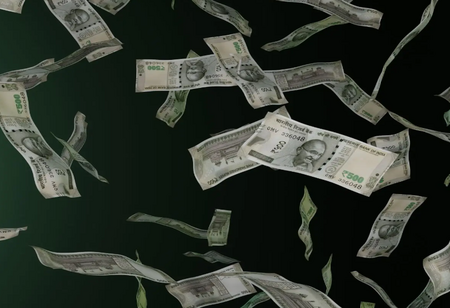How Rupee Is Getting Navigated by Fed and Geopolitics
By Consultants Review Team
 Despite global uncertainty, broader strength in the dollar against its major crosses, and heightened geopolitical tensions and FII funds outflow on the domestic front, the rupee has traded in a narrow range for the last six weeks, with volatility confined to the range of 82.80 and 83.50.
Despite global uncertainty, broader strength in the dollar against its major crosses, and heightened geopolitical tensions and FII funds outflow on the domestic front, the rupee has traded in a narrow range for the last six weeks, with volatility confined to the range of 82.80 and 83.50.
Domestically, approximately $3 billion in fund outflows from FIIs from the equity segment have occurred in the recent several months. The rupee's volatility has been reduced by vigorous RBI intervention, and the latest data show reserves currently stand at $583.5 billion, down from $2.3 billion for the week ending October 20th. Domestically, inflation has been kept under control, but the growing trade deficit is causing concern in the market.
The dollar surged as a result of safe-haven buying in response to better-than-expected economic data and higher US treasuries. Ten-year rates in the United States soared to their highest level in 16 years on expectations of additional rate hikes. This week, no big economic data is scheduled to be issued in the United States, but global influences will continue to influence the dollar. Geopolitics will remain at the forefront, and additional uncertainty might impact the rupee and other major currencies.
The dollar has risen as a result of safe-haven buying and better-than-expected US economic statistics. The Fed policy statement will be released in the United States, and expectations are that the central bank will keep rates on hold, but the Fed Chairman's speech will influence the market. The USDINR(Spot) is expected to trade sideways but with a bullish tilt, quoting between 83.05 and 83.80.
The dollar rose versus its main counterparts as safe-haven purchasing persisted, as geopolitical uncertainties kept market investors on edge. Most recent US economic data have exceeded expectations, and the economy appears to be resilient to the Fed's monetary tightening measures.
Advance GDP, durable goods, and core PCE index readings all came in above expectations last week. The economy grew at its quickest rate in over two years in the third quarter, according to data, as higher wages from a tight labor market boosted consumer spending. Last quarter's GDP growth rate was 4.9% year on year, the fastest since the fourth quarter of 2021.
Durable goods orders increased by 4.7% in September, above predictions of a 2% gain. This week's focus will be on the FOMC policy announcement, with the assumption that the central bank would keep rates on hold. The Fed Chairman is expected to remain hawkish, keeping the dollar at current levels.




